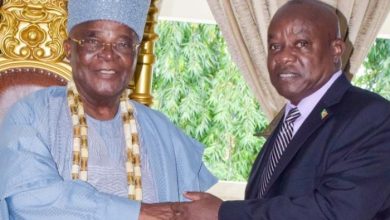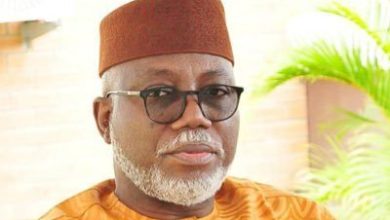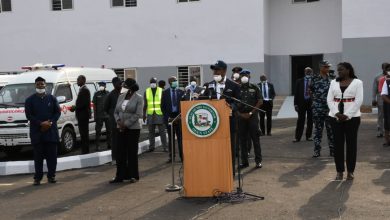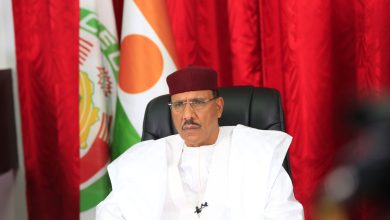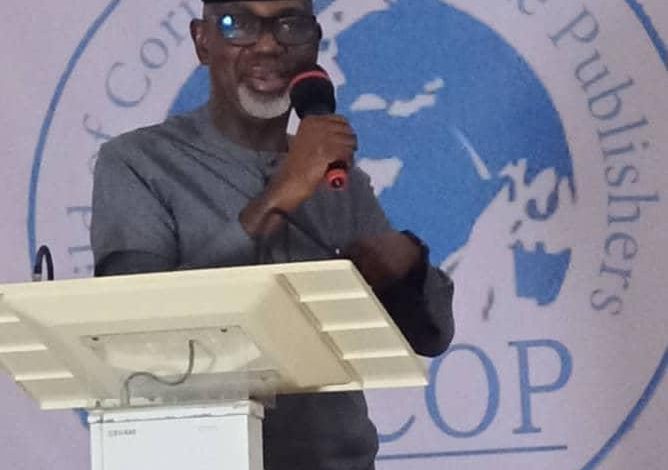
For records: Keynote speech delivered by Senator Liyel Imoke at the 8th annual conference of guild of corporate online publishers held October 3, 2024 in Lokoja, Capital of Kogi State, Nigeria:
Nigeria’s path forward: Tackling insecurity, electic power deficit, and transitioning to a digital economy
By Liyel Imoke CON
Distinguished guests, ladies, and gentlemen, let me start by thanking the guild for inviting me to deliver this keynote. I am deeply honored to stand before you today to speak on three of the most critical challenges Nigeria faces in the 21st century—challenges that not only impede our growth but also compromise our global competitiveness. These are insecurity, electricity deficiency, and the transition to a digital economy. Each of these subjects ought to be independently treated extensively. However, I will try to give some depth to them in this presentation. It is impotent to state that these interconnected issues, if tackled head-on, hold the key to unlocking the immense potential of Nigeria’s people, resources, and entrepreneurial spirit.
Over the past 25 years, Nigeria has made tremendous strides in various sectors, yet these critical issues have persisted, limiting our ability to fully realize our nation’s potential. Today, I will present data and analysis from the last quarter-century, while also offering practical and evidence-based solutions to these challenges. I will also highlight how Nigeria can effectively transition to a digital economy that ensures inclusive prosperity for all its citizens
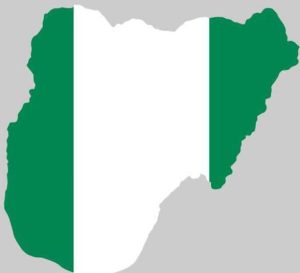
PART 1: TACKLING INSECURITY IN NIGERIA
While I certainly cannot claim to be an authority on security or to have had any formal security training, I can only assume that in selecting me to deliver this keynote, the organizers may have considered the fact that I was once the chief security officer of a sub national. I will naturally bring some of my experience to bear in addressing this part of the presentation.
Overview of Insecurity in Nigeria (1999-2024)
Insecurity in Nigeria has evolved over the past 25 years. The return to democracy in 1999 brought hope for peace and development, but since then, we have experienced a range of security challenges. These challenges include:
- Insurgency (Boko Haram and ISWAP):
Since 2009, Boko Haram has been the primary security challenge in northeastern Nigeria, with the group seeking to establish an Islamic state. In 2015, a splinter group, the Islamic State West Africa Province (ISWAP), emerged, further complicating the insurgency.
- Banditry and Kidnapping:
Armed banditry and mass abductions have been rampant, particularly in the northwest and north-central regions. Bandits engage in cattle rustling, illegal mining, robbery, and large-scale kidnappings for ransom.
- Ethnic and Communal Clashes:
In various regions, especially the Middle Belt, violent conflicts between farmers and herders have escalated over land and water resources. Ethnic tensions have also contributed to communal violence.
- Militancy (Niger Delta):
Militancy in the Niger Delta, driven by grievances over oil revenue distribution and environmental degradation, has caused security challenges, especially during the 2000s.
- Organized Crime and Piracy:
Organized crime, including piracy in the Gulf of Guinea, has posed a major threat to maritime security and Nigeria’s oil infrastructure.
- Separatist Agitation in the Southeast:
Separatist agitation driven by percieved marginalization has caused security challenges and economic hardship in the region.
According to the Global Terrorism Index, Nigeria has consistently ranked among the top five countries most affected by terrorism since 2013. Between 2009 and 2020, the Boko Haram insurgency alone resulted in the deaths of over 40,000 people and the displacement of more than 2 million Nigerians.
Factors Contributing to Insecurity
– Poverty and Unemployment: The unemployment rate surged from 6.4% in 2010 to over 33.3% by 2022 and its close 40% today.. Youth unemployment, in particular, has fueled militancy and criminal activities.
– Weak Governance and Corruption: Inconsistent government policies and widespread corruption in the security forces have compromised efforts to maintain law and order.
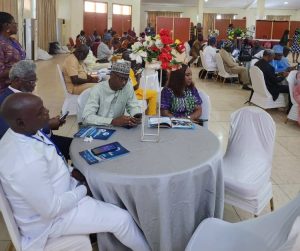
– Climate Change: Desertification and water scarcity have intensified farmer-herder conflicts, particularly in the Middle Belt.
– Proliferation of Small Arms: The spread of illegal firearms has exacerbated violent crime across the country.
At this juncture I’d like to briefly look at the effort made by successive governments in tackling these challenges while highlighting some successes and of course significant failures particularly in addressing the root causes and evolving nature of various security threats.
Some of the successes include:
- Degradation of Boko Haram’s Territorial Control
– In the early 2010s, Boko Haram controlled large swathes of
territory in northeastern Nigeria, particularly in Borno, Adamawa, and Yobe States.We all remember the infamous Chibok girls kidnapping. By 2015, Boko Haram had declared a caliphate in the region. However, sustained military campaigns, particularly under Operation Lafiya Dole, launched in 2015, succeeded in reclaiming most of the territory held by the group.
– By 2016, Nigeria had regained control of major cities such as parts of Maiduguriand Bama
– Between 2015 and 2022, Boko Haram’s influence was reduced to guerrilla attacks, and their ability to hold territory was significantly diminished.
– The Global Terrorism Index (GTI) reports that deaths from terrorism in Nigeria decreased by 47% in 2020, driven by the weakening of Boko Haram and ISWAP.
– According to available data, by 2023, the Nigerian military had killed or arrested over 3,000 Boko Haram insurgents and secured the surrender of 40,000 combatants.
- Reduction in Niger Delta Militancy
– In the 2000s, militancy in the Niger Delta, driven by groups
such as the Movement for the Emancipation of the Niger Delta (MEND), led to disruptions in oil production and attacks on infrastructure. However, the government’s 2009 Amnesty Program significantly reduced violence in the region.
– By 2011, oil production had rebounded from a low of less than 1.6 million barrels per day (bpd) in 2009 to over 2.2 million bpd
– Attacks on oil facilities significantly decreased after the amnesty, although sporadic violence persisted.

- Anti-Piracy Measures
– Nigeria has improved maritime security through the Deep Blue
Project, launched in 2021. This initiative, led by the Nigerian Maritime Administration and Safety Agency (NIMASA), combined with international collaboration, has reduced piracy in the Gulf of Guinea.
– According to the International Maritime Bureau (IMB), piracy incidents in the Gulf of Guinea decreased by 58% between 2020 and 2021.
- Tackling Separatist Agitation
-One of the government’s notable successes was the arrest of
Nnamdi Kanu, IPOB’s leader. Kanu’s arrest reduced IPOB’s public activities and disrupted the group’s momentum, although it did not eliminate its influence entirely.
-The Nigerian government has launched several military operations in the southeast to curb IPOB and ESN activities These operations have led to the arrest of hundreds of IPOB members and a temporary reduction in attacks on government installations.
-Nigerian security forces have successfully foiled multiple IPOB-organized protests and parades, disrupting their operational activities.
- Advances in Technology and Intelligence Gathering – The Nigerian government has increasingly leveraged
technology and intelligence, such as drones and satellite imagery, in counter-insurgency operations and in combating banditry and kidnapping. Joint operations with neighboring countries under the
Multinational Joint Task Force (MNJTF) have also improved regional coordination against terrorism.
Some of the obvious Failure in Tackling Insecurity would include:
- Persistent Boko Haram and ISWAP Insurgency
– While Boko Haram’s territorial control has been significantly
degraded, insurgent attacks continue in the northeast. The rise of ISWAP has further prolonged the conflict, with the group targeting military installations and civilian populations.
– The conflict has reportedly displaced over 2.7 million people in the region, according to the United Nations.
– The UN Office for the Coordination of Humanitarian Affairs (OCHA) reported that over 350,000 people have died as a result of the insurgency, either from violence or indirect causes like starvation and disease.
- Rising Banditry and Kidnapping
– Kidnapping for ransom has become one of Nigeria’s most
pressing security issues, with bandits terrorizing the northwestern and north-central regions.
– In 2021, Nigeria recorded over 5,000 kidnapping incidents, according to SB Morgen, a research group.
– Ransoms paid by families or communities to bandits have reached billions of naira annually, while bandit attacks have displaced hundreds of thousands.
– In states like Zamfara, Katsina, and Niger, entire communities have been displaced, and some areas have seen collapsed governance.
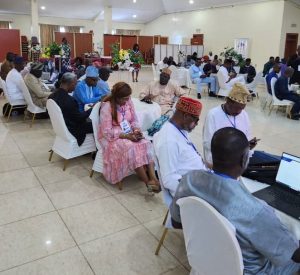
- Herders-Farmers Conflicts
– The conflict between farmers and herders, particularly in the
Middle Belt, has worsened, often with ethnic and religious undertones. The conflict stems from competition over land and resources, exacerbated by climate change and population growth.
– In 2021, over 3,600 people were killed in violent clashes between farmers and herders, according to data from the Armed Conflict Location & Event Data Project (ACLED).
– The conflict has led to the destruction of communities, with no lasting solution yet implemented.
- Continued Separatist Agitation
-Despite multiple military operations, the separatist agitation in
the southeast has escalated, with IPOB’s Eastern Security Network (ESN) engaging in guerrilla-style attacks on government forces, police stations, and prisons.In 2021, southeastern Nigeria witnessed over 200 attacks on police stations, government buildings, and election offices. These attacks led to the death of at least 70 police officers and numerous civilians, according to SB Morge
– In 2021, separatist violence and clashes between IPOB’s ESN and Nigerian security forces led to the deaths of over 300 civilians in the southeast, according to the International Crisis Group.
-Public Trust – Amnesty International has reported extrajudicial killings, arbitrary arrests, and the excessive use of force during military operations in the southeast.
-The government’s focus on military crackdowns and arrests has largely ignored the underlying causes of separatist agitation in the southeast. Key grievances such as marginalization, lack of political representation, and poor infrastructure,

-IPOB has retained its ability to enforce sit-at-home orders, with many businesses and residents in the southeast complying due to fear of reprisal. These orders have paralyzed economic activities on several occasions.
- Slow Progress on Security Reforms
– The Nigerian Police Force and military are often criticized for inefficiency, poor coordination, corruption, and human rights abuses. These factors have hindered efforts to combat crime and insurgency effectively.
– Nigeria’s police-to-citizen ratio remains inadequate, with only 1 police officer per 548 citizen (well below the UN recommendations of 1:400).
– Insecurity has contributed to a rising wave of public distrust in security forces and calls for reform, as seen in the #EndSARS protests in 2020.
I strongly believe a multifaceted approach is required to effectively tackle insecurity in the country. Some recommendations on the way forward would include:
- Strengthening Local Security Architecture
Community Policing: I’m an advocate for expanding community policing programs and integrating local vigilante groups into formal security operations. This will improve intelligence gathering, foster trust between security forces and communities, and ensure a more proactive response to local threats. -Consideration should be given to the decentralization of security; Granting state governments greater control over local security forces could improve regional responses to insecurity.
- Improving the Condition of the Economy:
There’s a corollary relationship between poverty and insecurity. Economic empowerment programs, particularly targeting the youth, can reduce the appeal of criminal activities. This includes skills acquisition programs, entrepreneurship training, and access to financing for small and medium enterprises.
- Implementing Comprehensive Rural Development Programs
To address the root causes of banditry, kidnapping, and farmer-herder conflicts, the government should implement development initiatives that target rural poverty, job creation, and resource management. Special focus should be placed on providing education and employment for young people vulnerable to criminal groups.
- Deploy Advanced Technology for Intelligence Gathering – Increased use of drones, surveillance technology, and intelligence-driven operations will enhance the government’s ability to monitor and respond to insurgent and criminal activities. We should also improve coordination with regional partners in intelligence sharing.
- Implement Sustainable Peace and Mediation Programs
– Resolving the farmer-herder crisis requires a combination of
short-term security measures and long-term resource management. The government should establish dialogue platforms between herders and farmers and promote sustainable grazing reserves and agricultural policies that reduce competition over land and water.
- Enhance Funding for Security Agencies
– The military and police forces need adequate funding and
training. I must also emphasize judicious use of available resources. Procurement processes should be transparent, and resources must be used to improve equipment, welfare, and training of personnel. And emphasis should be placed on reducing corruption and improving oversight in the security sector.
- Strengthening Legal and Judicial Systems
– To tackle impunity, the government must ensure that the legal
system swiftly prosecutes those involved in organized crime, banditry, and insurgency. Enhancing the judicial system’s capacity to deal with security-related cases will discourage criminal activity.
Bolstering Regional and International Cooperation
– Nigeria should continue strengthening ties with neighboring countries (e.g., through the MNJTF) and international partners to tackle transnational threats such as terrorism, arms smuggling, and organized crime. Enhanced cooperation will improve border security and intelligence sharing.
Border Control and Arms Regulation
– Strengthening border security and enforcing stringent regulations on the sale and possession of firearms are critical to curbing the flow of illegal weapons into Nigeria.
Rehabilitation and Reintegration Programs
– For individuals involved in armed militancy or separatist movements, rehabilitation and reintegration programs should be enhanced to help them transition into productive members of society.
Conclusion
While Nigeria has made some strides in reducing insurgency and addressing maritime insecurity, the country continues to face significant security challenges, especially related to banditry, kidnapping, and communal clashes. Addressing these challenges will require a multifaceted approach involving better governance, regional cooperation, security sector reforms, and sustainable development programs aimed at tackling the root causes
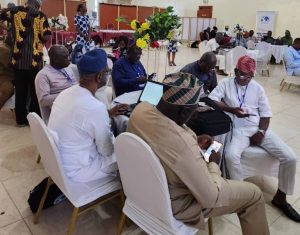
PART 2: TACKLING NIGERIA’S ELECTRIC POWER DEFICIT
1.Overview of Nigeria’s Power Sector (1999-2024)
For obvious reasons, this is a turf that I am more familiar with and I believe this will be reflected in the course of our discourse.
The electricity supply in Nigeria remains one of the most significant constraints to economic growth. Since 1999, several power sector reforms have been introduced, yet Nigeria’s electricity generation and distribution remain grossly inadequate. With an estimated population of over 220 million, Nigeria’s current installed capacity of around 13,000 MW only manages to deliver 4,000-5,000 MW on average. This is far below the demand of over 20,000 MW, leading to frequent blackouts and reliance on expensive diesel generators. To fully grasp the magnitude and impact of this challenging sector, here’s some sobering data of the per capita electricity consumption for Nigeria, Ghana, South Africa, and Ivory Coast based on recent data:
– As of the latest estimates, Nigeria’s per capita electricity consumption is around 150 to 200 kWhper year. This low consumption reflects challenges in electricity access, infrastructure, and supply.
– Ghana’s per capita electricity consumption is approximately 800 to 1,000 kWh per year. The country has made significant strides in improving electricity access and reliability over the past decade.
– South Africa’s per capita electricity consumption is estimated at around 4,000 to 5,000 kWh per year. This figure reflects the country’s industrial base and higher levels of electricity access.
– Ivory Coast’s per capita electricity consumption is roughly 500 to 600 kWh per year. Ivory Coast has been working to expand its electricity infrastructure and improve access to power.
Despite numerous reforms and investments, the power sector continues to struggle. The challenge appears intractable and unresolvable. Over the years we have seen multiple instances of unfulfilled promises for power delivery. The question would then be, is there a solution in the face of growing demand? To understand the magnitude of the challenge I will first attempt to highlight some of the key constraints to reducing the power deficit and then I will proffer potential solutions to them.

However, I would start with reflecting on my stint as first, Chairman of the technical board and subsequently Minister of Power, when I introduced several significant reforms to revitalize the sector and lay the groundwork for the subsequent privatization and liberalization of the the sector. As with all reform processes, there was strong resistance from entrenched interests. However, we made good progress largely because of the strong political will of President Olusegun Obasanjo who drafted me to the sector after a six day total national blackout. These key reforms and initiatives include:
- Electric Power Sector Reform Act (EPSRA) of 2005, enacted during my tenure, set the legal framework legal framework for the unbundling and eventual privatization of the Nigerian power sector. The Act paved the way for:
– The unbundling of NEPA into 18 successor companies, 6 generation companies (GenCos), 11 distribution companies (DisCos), and 1 transmission company (TCN).
– The creation of the Nigerian Electricity Regulatory Commission (NERC), the regulatory body to oversee the electricity sector, ensuring proper regulation, tariff setting, and consumer protection.
– The establishment of the Nigerian Bulk Electricity Trading Company (NBET) to facilitate the purchase of power from GenCos and its sale to DisCos.
– The eventual privatization of the DisCos and GenCos, took place after after my tenure.
Unbundling of NEPA
– As chairman of the NEPA Technical Board, I was responsible for overseeing the restructuring of NEPA to prepare for its eventual privatization. The process involved breaking up NEPA’s monopoly and transitioning it into smaller, more efficient entities that would handle specific aspects of electricity generation, transmission, and distribution. This reform aimed to increase efficiency and attract private sector investment into the power sector.
- Power Sector Liberalization and Private Sector Participation.
– I advocated for increased private sector involvement in the power sector, recognizing that the government could not single-handedly resolve the issues of inadequate capacity and poor infrastructure. The reforms initiated during my tenure laid the groundwork for private sector participation in the electricity market, which as I mentioned, would later culminate in the privatization of the generation and distribution segments.
- National Integrated Power Project (NIPP)
– One of our key initiatives was the launch of the National
Integrated Power Project (NIPP)in 2004. The NIPP was designed to fast-track power generation and improve infrastructure through the construction of new gas-fired power plants, transmission lines, and distribution networks across the country. The NIPP was originally funded by the Excess Crude Oil Account and aimed to deliver significant new generation capacity to the grid.
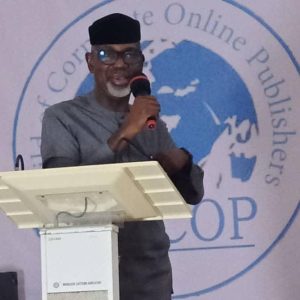
– The NIPP program initially targeted the construction of over 5,000 MW of new generation capacity through various power plants, as well as improvements in transmission and distribution systems.
- Strengthening Transmission Infrastructure
– Recognizing the weakness of Nigeria’s transmission
infrastructure, we pushed for significant investment in upgrading the transmission grid. The reforms aimed to strengthen the capacity of the grid to handle higher volumes of electricity generated from new and existing power plants.
- Creation of the Rural Electrification Agency (REA)
– I played a role in expanding electricity access to underserved
rural areas through the creation of the Rural Electrification Agency (REA). The agency was tasked with increasing electricity coverage in rural and peri-urban areas, which had been neglected by NEPA. This was part of the broader goal of achieving universal electricity access in Nigeria.
- Promoting Efficiency and Cost-Reflective Tariffs
– I also worked on initiating reforms to improve the financial sustainability of the power sector by introducing more cost-reflective tariffs. Although full implementation of cost-reflective tariffs was delayed until later these reforms laid the foundation for future tariff adjustments that would ensure that power companies could cover their costs and make necessary infrastructure investments.
- Addressing NEPA’s Inefficiencies
– Under my leadership, efforts were made to address the inefficiencies within NEPA, which was plagued by operational challenges, corruption, and underinvestment. We initiated reforms aimed at improving NEPA’s management and financial accountability, even as the process of breaking up the authority was underway.
Impact of Reforms

The reforms we spearheaded set the stage for the subsequent privatization of Nigeria’s power sector in 2013 and the creation of a regulatory framework that continues to guide the sector today. Although the power sector still faces significant challenges, such as generation deficits and weak infrastructure, my tenure was marked by foundational changes that moved the country from a state-run monopoly towards a more liberalized and market-driven electricity industry.
Challenges:
While these reforms laid the foundation for eventual privatization and restructuring, the actual execution of some of these reforms faced challenges, one of which was the undue and unnecessary delays in the implementation of the NIPP and other projects as a result of a phantom $16billion power probe. The claim that $16 billion was spent on the power sector has been repeated without sufficient verification by media outlets and critics, often creating the impression that the money was “wasted” during my tenure. However, subsequent investigations have revealed that much of the criticism was based on incomplete or inaccurate information regarding how the funds were managed. It is on record that actual spending during my tenure is estimated to be around $2–$3 billion, much of which was targeted toward the launch of the NIPP and other infrastructure upgrades. The $16 billion figure has been repeatedly used as a political tool to criticize power sector reforms, but it lacks proper context and a breakdown of actual expenditures.
Unfortunately, these delays led to huge cost overruns, largely due to inflation and breaches in contract terms caused by the effusion of time. It is important to note that the delays led to at least a doubling of the various contact costs and the overall cost of the NIPP. Furthermore, many of these projects were not completed until several years later and several of them are still ongoing as I speak.
However, overall, these reforms were instrumental in steering Nigeria’s power sector toward modernization, deregulation, and private sector participation, even though many of the challenges of the sector persist to this day.
Key Constraints to Reducing Nigeria’s Power Deficit
- Inadequate Generation Capacity
– Installed Capacity vs. Operational Capacity: Nigeria has an
installed generation capacity of over 13,000 MW, but only about 4,500 to 5,000 MW is available to the grid due to technical issues, maintenance challenges, and insufficient gas supply to thermal power plants.
– Over-reliance on Gas: About 80% of Nigeria’s electricity generation comes from gas-powered plants, which makes the sector vulnerable to gas supply shortages and disruptions from pipeline vandalism.
- Weak Transmission Infrastructure
– Nigeria’s transmission infrastructure, managed by the
Transmission Company of Nigeria (TCN), is often described as the “weakest link” in the power value chain. The transmission network can only handle about 5,300 MW at peak performance, far below the country’s actual electricity demand, which is estimated at over 28,000 MW
– Frequent Transmission Failures: Aged infrastructure and lack of investment have led to frequent grid collapses and transmission losses of as high as 40% in some areas.
- Distribution Challenges
– High Distribution Losses: The distribution companies
(DisCos) face high technical and commercial losses due to outdated equipment, theft, and non-payment by consumers. Technical losses result from poor infrastructure, while commercial losses stem from inefficient billing systems and poor collection practices.
– Insufficient Metering: A significant percentage of electricity consumers are not metered, leading to estimated billing, customer dissatisfaction, and resistance to payment. As of 2022, over 50% of electricity customers in Nigeria were not metered.
- Gas Supply and Pricing Issues
– Gas Constraints: Despite being rich in natural gas reserves,
Nigeria struggles with ensuring consistent gas supply to power plants. Gas pricing policies, insufficient investment in gas infrastructure, and pipeline vandalism frequently disrupt supply, reducing the output of gas-powered plants.

– Gas Pricing: The domestic gas price structure for the power sector is often not cost-reflective, making it unattractive for gas producers to prioritize supply to power plants over export markets.
- Funding and Investment Gaps
– Lack of Long-term Investment: Nigeria’s power sector
requires significant investment in generation, transmission, and distribution infrastructure. The government has struggled to attract the necessary long-term private investment, partly due to regulatory uncertainties and perceived risks in the sector.
– Debt and Cash Flow Issues: The DisCos are often unable to recover their costs due to low tariffs, theft, and inefficiencies, leading to a liquidity crisis in the sector. They owe significant debts to the Nigerian Bulk Electricity Trading (NBET) company, which in turn affects payments to generation companies (GenCos).
- Regulatory and Policy Inconsistencies
– Frequent Policy Changes: Inconsistent government policies and regulations have created an uncertain business environment, discouraging investment. Changes in tariffs, licensing, and government interventions have sometimes created a lack of trust between the government and private sector players.
– Tariff Structure: Nigeria’s electricity tariff structure has historically been non-cost-reflective, with subsidies making it difficult for operators to cover the cost of generating and distributing electricity. Although the Multi-Year Tariff Order (MYTO) seeks to address this, implementation has been inconsistent.
- Vandalism and Insecurity
– Pipeline Vandalism: Attacks on gas pipelines, particularly in
the Niger Delta, have been a major constraint on gas supply to power plants, leading to plant shutdowns and electricity shortages.
– Sabotage and Theft: In addition to pipeline vandalism, there is widespread theft of electrical infrastructure, such as transformers, cables, and other equipment, which disrupts power supply and increases operational costs for DisCos.
- Poor Power Sector Governance:
– Inefficient Management: Despite privatization, there have been issues with governance, particularly in the management of DisCos. Some companies have struggled with inefficiency, corruption, and lack of capacity to operate effectively.
– Weak Enforcement of Contracts: Inadequate enforcement of contracts between government agencies, power operators, and gas suppliers has led to disputes and project delays.
- Limited Renewable Energy Integration
– Nigeria has immense potential for renewable energy (solar,
wind, hydro), but this remains underutilized. Regulatory and financial barriers have prevented large-scale investment in renewables, and the country remains overly reliant on fossil fuels.

The Way Forward in Address Nigeria’s Power Deficit
- Expand and Diversify Generation Capacity
– Gas Infrastructure Investment: Nigeria needs to invest in expanding its gas pipeline network, ensuring more stable gas
supply to power plants. This will require collaboration between the government and private sector, as well as improving security in the Niger Delta to reduce pipeline vandalism.
– Diversify Energy Sources: Nigeria should invest in diversifying its energy mix by increasing the share of renewable energy sources. Solar, wind, and small hydropower projects could provide decentralized solutions to areas that are not well-served by the grid. Expanding renewable energy projects will reduce the over-reliance on gas and improve energy security.
– Incentivize investments in renewables by offering tax breaks and improving access to green financing.
- Strengthen Transmission Infrastructure
– Invest in the Transmission Network: Significant investment is
required to upgrade and expand the transmission grid. This includes the construction of new transmission lines, upgrading existing ones, and increasing substation capacity. The government should prioritize public-private partnerships (PPPs) to mobilize financing for transmission projects.
– Unbundle the Transmission System: Allowing greater private sector involvement in the transmission network, possibly through a concession system, could improve efficiency and reduce transmission bottlenecks.
- Improve Distribution and Metering
– Accelerate Metering: The Nigerian Electricity Regulatory
Commission (NERC) should fast-track the Meter Asset Provider (MAP) scheme to ensure that all consumers are metered. This will reduce billing disputes, improve payment compliance, and help DisCos recover revenues. NERC must also effectively regulate these natural monopolies snd protect consumers from shouldering the cost of the inefficiency of the operators.
– Reduce Distribution Losses: Distribution companies should invest in upgrading their infrastructure to reduce technical losses. This may involve replacing old equipment, upgrading substations, and implementing modern grid management technologies.
– Enhance Revenue Collection: DisCos should improve their customer service, reduce estimated billing, and implement more efficient billing and collection systems.
- Address Gas Supply Issues
– Gas Pricing Reform: The government should review and
update gas pricing policies to make them more cost-reflective, ensuring that power plants can access affordable and reliable gas supplies. This could involve revising the domestic gas obligations and introducing incentives for gas producers to prioritize the domestic market.
– Security of Pipelines: Improved security measures, including community policing and surveillance technology, should be implemented to protect gas pipelines from vandalism.
- Ensure Cost-Reflective Tariffs
– Tariff Reforms: Tariffs need to be adjusted to reflect the true
cost of electricity production, transmission, and distribution, while ensuring affordability for consumers. The Service-Based Tariff (SBT)system, which ties tariffs to the quality of service received by customers, is a step in the right direction but needs consistent implementation.
– Targeted Subsidies: Rather than subsidizing electricity across the board, the government should implement targeted subsidies for low-income households, allowing DisCos to charge higher tariffs to more affluent consumers and industries.

- Encourage Private Sector Investment
– Enhance Regulatory Certainty: The government must create
a more stable and predictable regulatory environment to attract long-term investments. This includes sticking to agreed contracts, reducing political interference, and ensuring a transparent regulatory process.
– Public-Private Partnerships (PPP): The government should promote more PPPs for power sector projects, especially in transmission and generation. Providing guarantees and risk-sharing mechanisms could encourage more private sector participation.
- Improve Governance and Accountability
– Strengthen Management of DisCos and GenCos: The
government should enforce performance contracts and hold operators accountable for inefficiencies. If private operators fail to meet agreed benchmarks, the government should have the option of repossessing or reselling the companies.
– Capacity Building: Invest in building technical capacity within regulatory bodies and power companies to improve governance and management practices.
- Leverage Decentralized Solutions
– Mini-Grids and Off-Grid Solutions: Nigeria should encourage
the development of decentralized power solutions, such as mini-grids and solar home systems. These are especially useful in rural areas that are not connected to the national grid and could help meet the country’s energy needs more quickly and affordably.
- Enhance Regional Power Integration
– West African Power Pool (WAPP): Nigeria should actively participate in the WAPP initiative, which promotes regional power sharing across West Africa. By enhancing cross-border electricity trading, Nigeria can benefit from regional resources and stabilize its power supply.
This presentation would be incomplete without specific mention of the new Electricity Act 2023, which replaces the Electric Power Sector Reform Act (EPSRA) of 2005. The Electricity Act 2023 provides a new regulatory framework that significantly deregulates the Nigerian power sector, empowering states and the private sector. It opens up a wide range of opportunities for localized electricity markets, renewable energy development, and infrastructure investments. With the potential for more competitive and flexible market structures, both state governments and private investors can collaborate to solve Nigeria’s longstanding power challenges while capitalizing on new business opportunities.
Conclusion
Reducing Nigeria’s power deficit requires a comprehensive approach that addresses generation, transmission, and distribution constraints. The solutions involve infrastructure investments, regulatory reforms, increased private sector participation, and the adoption of new technologies such as renewable energy and decentralized systems. By tackling these challenges holistically, Nigeria can significantly improve its electricity supply, support economic growth, and improve the wellbeing of its citizens.

PART3: TRANSITIONING TO A DIGITAL ECONOMY
- Overview of Nigeria’s Digital Landscape (1999-2024)
Nigeria has made remarkable progress in expanding access to digital services over the last 25 years. The liberalization of the telecommunications sector in 2001 led to exponential growth in mobile phone subscriptions, rising from 450,000 active lines in 2001 to over 207 million by 2023. Mobile internet penetration has also increased significantly, with over 100 million internet users as of 2022. Despite these gains, Nigeria lags behind in digital infrastructure, digital literacy, and the adoption of digital technologies in government and business processes.
- Opportunities in Nigeria’s Digital Economy
– Fintech
Nigeria’s fintech sector is rapidly growing, driven by innovations in digital payments, micro-lending, and cryptocurrencies. The sector presents opportunities for job creation, financial inclusion, and economic growth.
– E-Commerce
E-commerce has significant potential, with platforms like Jumia leading the charge. Improved internet access, logistics, and payment systems can help e-commerce expand across Nigeria, offering new business opportunities for SMEs and entrepreneurs. – Agritech
Digital solutions in agriculture, such as precision farming, digital marketplaces, and fintech for farmers, present significant opportunities to modernize Nigeria’s agricultural sector and improve food security.
– E-Government
Digitalizing government services can enhance transparency, reduce corruption, and improve service delivery. The use of blockchain technology in public records, voting, and land registration is one example of how Nigeria can benefit from digital transformation.
– Digital Health and Education
The COVID-19 pandemic accelerated the adoption of telemedicine and e-learning platforms. These sectors remain fertile ground for further innovation, especially in addressing the gaps in healthcare access and education in rural areas.
- Challenges in Transitioning to a Digital Economy
– Digital Infrastructure: Inadequate broadband penetration and unreliable internet services hamper digital transformation, particularly in rural areas.
– Digital Literacy Gap: Although Nigeria boasts a young and dynamic population, digital literacy remains low, limiting the ability of the workforce to participate in the global digital economy.
– Regulatory and Legal Framework: The absence of robust laws governing data protection, cybersecurity, and intellectual property creates an environment of uncertainty for tech entrepreneurs and investors.
– Access to Finance: Many tech startups in Nigeria struggle to access the financing necessary to scale their businesses and compete globally.
– Cybersecurity Risks: As Nigeria’s digital footprint grows, so do the risks of cyber-attacks, data breaches, and fraud. Without robust cybersecurity frameworks, the growth of Nigeria’s digital economy could be undermined.
The Way Forward for Nigeria’s Digital Economy Transition 1. Government Commitment and Policy Framework
– National Digital Economy Policy and Strategy (NDEPS): The Nigerian government launched the National Digital Economy Policy and Strategy (NDEPS) 2020–2030, which outlines the roadmap for Nigeria’s digital transformation. The policy has eight pillars:
- Developmental Regulation
- Digital Literacy and Skills
- Solid Infrastructure
- Service Infrastructure
- Digital Services Development and Promotion
- Soft Infrastructure
- Digital Society and Emerging Technologies
- Indigenous Content Development and Adoption
These pillars highlight the need for infrastructure development, digital literacy, regulatory support, and indigenous innovation. By implementing NDEPS effectively, Nigeria can build a robust digital economy.
- Investing in Infrastructure Development
– Developing broadband infrastructure is key to Nigeria’s digital economy. The National Broadband Plan (2020-2025) seeks to achieve 70% broadband penetration by 2025, with minimum speeds of 25 Mbps in urban areas and 10 Mbps in rural areas. This infrastructure is critical for enabling digital services, e-commerce, and other internet-based industries.

– Data Centers and Cloud Computing: Investment in data centers and cloud infrastructure will support digital services, improve data security, and enhance Nigeria’s capacity for emerging technologies like AI and machine learning.
- Digital Literacy and Workforce Development
– Building a digitally literate workforce is fundamental to a successful transition. Comprehensive digital skills programs should be rolled out across the country to equip Nigerians with the skills needed for the Fourth Industrial Revolution. This includes coding, cybersecurity, data science, and artificial intelligence. Programs like the Digital Nigeria Program aim to improve digital skills for Nigerian youth, which will help address unemployment while equipping the workforce to thrive in a digital economy.
– Partnerships with the private sector and international organizations can enhance STEM education (Science, Technology, Engineering, and Mathematics) at all levels of education and boost training programs for tech and non-tech industries.
- Support for Startups
– The government should create a more favourable environment for tech startups by providing access to venture capital, tax incentives, and incubation hubs. Partnerships with international tech companies and organizations can further bolster the growth of Nigeria’s digital sector.
- Promotion of Fintech and Digital Financial Inclusion
– Nigeria’s fintech sector has seen significant growth, led by companies like Flutterwave, Paystack, and Interswitch. The Central Bank of Nigeria (CBN) introduced policies like the eNaira, Africa’s first central bank digital currency, to boost financial inclusion and promote a cashless economy.
– Expanding digital financial services to underserved areas and segments, including rural populations and women, is key to fostering inclusive growth in the digital economy.
- Government Initiatives
– Accelerating the adoption of digital technologies in government services will improve efficiency, transparency, and accountability. This includes implementing e-governance systems for tax collection, procurement, and public services.
- Enabling Regulatory Environment
– To foster a thriving digital economy, Nigeria needs a modern legal and favourable regulatory framework that supports innovation while safeguarding data privacy and cybersecurity. This is crucial for fostering innovation. Regulatory clarity around emerging sectors like cryptocurrency, e-commerce, data protection, and cybersecurity is necessary to build investor confidence and protect consumers.
– The creation of the Nigerian Data Protection Regulation (NDPR) is a step forward in safeguarding personal data, but further work is needed to fully align with global standards like the GDPR and ensure the protection of digital rights.
Conclusion
Nigeria’s transition to a digital economy holds immense potential for transforming its economic landscape, creating jobs, and driving inclusive growth. To fast-track this transition, the government must prioritize infrastructure development, digital literacy, favourable regulations, and indigenous innovation. While challenges such as poor internet access, regulatory uncertainty, and cybersecurity risks remain, the opportunities in fintech, e-commerce, agritech, and digital services present significant growth potential. With the right policies, partnerships, and investments, Nigeria can become a digital leader in Africa.

CONCLUDING REMARK
Ladies and gentlemen, tackling insecurity, solving the electric power deficit, and transitioning to a digital economy are three intertwined challenges that Nigeria must address to unlock its potential. The road ahead is long, but it is not insurmountable. With the right policies, investments, and collective efforts from both the public and private sectors, Nigeria can emerge as a leader in Africa and the world.
Let us seize this moment to build a secure, electrified, and digitally connected Nigeria – one that offers prosperity and opportunities for all its citizens.
Thank you. God bless.
Senator Liyel Imoke CON, is former Nigeria’s of Power and former Governor of Cross River State
FOOTNOTE: You want to share story with us? You want to advertise with us? You need publicity for product, or service, or event? Contact us on WhatsApp +2348073463653 or email penpushing@yahoo.com




